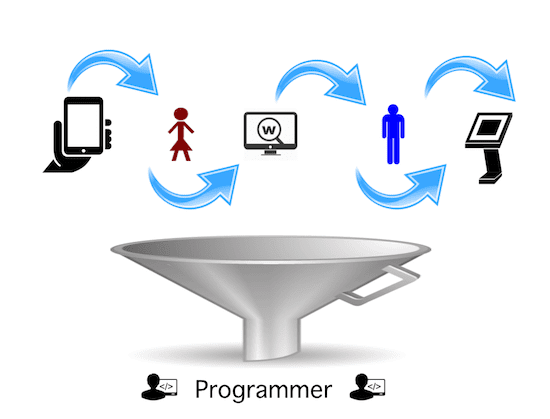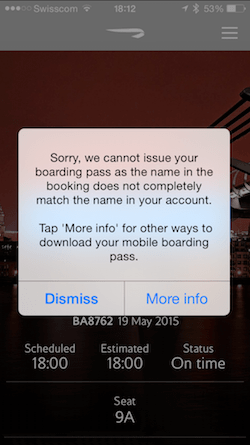The larger brick & mortar companies that are transforming into the digital era typically have their hands very full. It is a tricky path to weave, maintaining the current business flow, while fundamentally changing the longer-term mindset. The leadership teams are working on such topics as creating a single customer view, leveraging big data, creating valuable content, integrating and/or upgrading infrastructure… And the list goes on. Putting the customer in the middle can be a tectonic change for companies, involving not just a change in organizational structure, roles & responsibilities and incentive schemes; it is at its core about shifting mindsets.
The feedback mindset
In all the upheaval, one of the areas that very easily falls between the cracks is figuring out how to effectively channel and use feedback from customers. As seen by the massive uptake of sites like TripAdvisor, Uber and Airbnb, customers have a natural propensity to want to rate and review. Ratings and reviews are a form of consumer currency. Aside from being juice for SEO, ratings and reviews are gold for companies to gauge their offering.{♺!} Complaints need to be viewed as a gift, an opportunity not just to improve, but also to convert a critic into an advocate. However, when not appropriately managed, ratings and reviews can pose a threat to business. Resistance to feedback will manifest itself in the following ways:
- a lack of or poor indication how and where feedback should happen
- feedback that falls into a virtual black hole
- a glut of feedback (and complaints) that overwhelms the organization (system and personnel)
My app doesn’t work…!
The issue is exacerbated when the feedback concerns the digital activities themselves. Many of the most successful apps, games and software developers, embed a mechanism for customer feedback to enable constant improvements. However, when a brick and mortar company “moves” into the digital space, it will — more often than not — struggle to accommodate a feedback loop into its process. Without an invigorated and coordinated system – that can start with one’s own employees — the process of bringing digital into the customer journey will be awkward to say the least. As opposed to questions or concerns about core products, the queries and bugs relating to digital apps and devices stay outside of the usual circuit. For example, how and where is feedback enabled off and online for a faulty app or an irritating SMS text program (with no obvious opt-out) that a customer wishes to stop. Is there an intelligent way for feedback to get through to the responsible parties? Customer service is far too often relegated with the task of dealing with all customer feedback. However, they are the least equipped to handle digital issues.
The employee channel
One of the most sinful mistakes is not enabling and empowering one’s own employees — especially those on the front line — to provide and/or channel feedback. From a customer perspective, not having an easily available channel for feedback can cause frustration, not to mention impede a company’s ability to learn and improve. At its core, leadership needs to have a mindset that fosters and seeks all feedback. It’s about continuous learning. Of course, not all feedback is useful; but each feedback should be acted upon and channelled to the appropriate parties within the organization.
Feedback loop in a Digical* World
A recent story of mine illustrates the case. Travelling on British Airways, I checked in on my mobile app the day before the flight (as one does, in order to get the best seat possible). Unfortunately, I was not able to download the mobile boarding pass. The option “More Info” was not at all helpful. With a little determination, I went online (web) and found a way to get my boarding pass emailed to me (so that it would end up on my mobile). It was not a BIG deal, but it certainly was not a seamless experience.
When I arrived at the airport, I wanted to provide BA with the feedback and, hopefully, understand what the issue might have been? At City Airport, the British Airways personnel at the check-in brushed me off with a friendly guffaw:
“I may look like BA, but actually I am just a contracted agent. In any event, no one here at the checkin desk is aware of what goes on online or with the app.”
When I quipped that she must not appreciate that, she was quick to agree.
Bugs are a reality of the digital world
This situation nicely sums up the challenges for businesses to tackle both an issue of customer service as well as the digital hiccoughs that are bound to occur. Digital cannot be the remit solely of the digital team. A customer’s journey — especially in travel — is inherently multi- and omni-channel. There are multiple touchpoints that are digital and human, and, inevitably, they concern multiple departments. To the extent having passengers do their own check-in and issuing a paperless boarding pass is a happy cost saving, the airline is not off the hook for the rest. {♺ Please tweet this!} In order to win, I would argue they actually need to up their customer service game.
In this case, BA needs to find appropriate processes and platforms to enable the feedback loop to happen in an omni-channel world, so that the digital team (i.e. programmers…) can make the necessary adjustments. Without allowing such feedback, customers are frustrated and the best solution becomes harder to find.
Companies need to create and encourage feedback from customers, particularly in this buggy digital world. As companies (and their customers) increase their attention to the services (including apps, etc) surrounding their core offer, the feedback loop about digital tools and platforms will become significantly more important. Allowing an easy and transparent method for customer feedback can be a way as to respond to/quell complaints and, importantly, resolve the issues as efficiently as possible.
Your thoughts and reactions please!
*Term employed by Bain, referring to the merger of physical and digital













